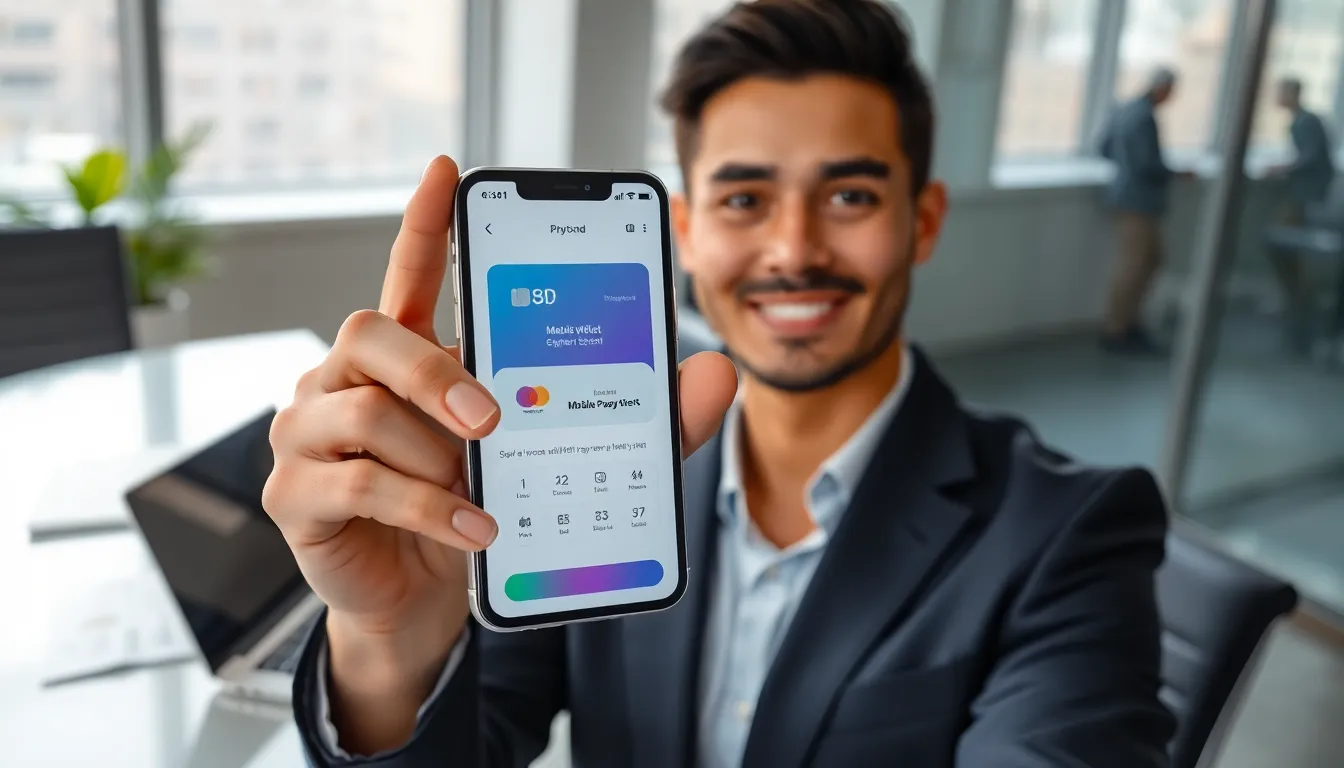In a world where swiping for coffee can sometimes feel like more work than running a marathon, mobile phone payment systems are here to save the day. Imagine zipping through checkout lines while the traditional wallet stares at you from the depths of your bag, feeling utterly obsolete. Funny, right? In this text, we’ll jump into the digital wallets transforming our financial habits, bursting with convenience and cutting-edge tech. Buckle up, because the future of payments is now.
Table of Contents
ToggleOverview of Mobile Payment Systems

Mobile payment systems have rapidly changed how consumers and businesses interact financially. At their core, these systems use mobile devices to help transactions, eliminating the need for cash or cards. With the rise of smartphones, the convenience of mobile payments is hard to ignore. Consumers can pay for groceries, transfer money to friends, or even purchase concert tickets with just a few taps on their screens. No more fumbling with coins or waiting on long cashier lines: these systems streamline the payment process, making it faster and more efficient.
Several technologies underpin mobile payment systems, including Near Field Communication (NFC), QR codes, and digital wallets. Each of these technologies offers unique benefits, propelling mobile payments into the mainstream. Whether it’s using Apple Pay at Starbucks or scanning a QR code at a local farmers’ market, the versatility of mobile payment systems is paving the way for the future of transactions.
Types of Mobile Payment Systems
Exploring the various types of mobile payment systems reveals how diverse this landscape can be.
Digital Wallets
Digital wallets like Apple Pay, Google Pay, and Samsung Pay have garnered immense popularity. They allow users to store payment information securely on their phones. This convenience comes with an added bonus: many of these platforms integrate loyalty cards and offers, making them not just wallets but a one-stop shop for savings.
Peer-to-Peer Payment Systems
Platforms such as Venmo, Cash App, and Zelle cater to the social aspect of payments. They make splitting bills or sending money to a friend as simple as a text message. Peer-to-peer payment systems have become a staple for younger generations, enabling effortless transactions without a second thought.
Mobile Banking Apps
Traditional banks are not left behind. Many institutions offer mobile banking apps that allow users to manage their accounts and make payments directly through their smartphones. This shift represents a blending of the old and the new, where established banks leverage modern technology to stay relevant in an increasingly digital world.
Security Features of Mobile Payment Systems
Given the rise of digital transactions, security becomes paramount in mobile payment systems. Users need to navigate through a maze of security features designed to protect their financial data.
Encryption Standards
End-to-end encryption ensures that sensitive information is scrambled during transmission, making it nearly impossible for hackers to intercept data. This technology is foundational in securing payment systems against fraud.
Biometric Authentication
Many mobile payment systems incorporate biometric features like fingerprint scanning and facial recognition. This innovative technology adds an additional layer of security, ensuring that even if a phone lands in the wrong hands, unlocking it to access payment apps remains nearly impossible without the owner’s physical traits.
Tokenization
Tokenization replaces sensitive information with unique identification symbols or tokens. Hence, even if data is compromised, what remains is useless to cybercriminals. This means that financial transactions happen with minimal risk of identity theft.
Advantages and Disadvantages of Mobile Payments
While the convenience of mobile payments is undeniable, they do come with their own set of pros and cons.
Advantages
- Speed
Transactions are processed faster than traditional payment methods. Customers can complete purchases in mere seconds, making it ideal for both consumers and merchants.
- Convenience
A mobile payment is a wallet that fits in a pocket. Users can make quick transactions anytime, anywhere, without the hassle of carrying cash or cards.
- Organizational Benefits
Digital wallets often provide transaction histories and simplified record-keeping, making expense tracking much easier.
Disadvantages
- Dependence on Technology
If a phone battery dies or an app malfunctions, users may find themselves unable to pay, leading to inconvenience.
- Potential for Fraud
As secure as these systems are, they are not entirely foolproof. The risk of hacking and data breaches persists, which can deter cautious users.
- Digital Divide
Not everyone has access to smartphones or reliable internet connections, which can create barriers in adopting mobile payment systems.
The Future of Mobile Phone Payment Systems
As technology continues to evolve, so too will mobile payment systems. Expect to see further advancements in security, integration with smart devices, and possibly even the rise of cryptocurrencies as mainstream payment options.
Innovations like contactless payments are set to revolutionize industries beyond retail, such as public transportation and healthcare, paving the way for a more fluid economic landscape. Augmented reality could even integrate into shopping experiences, enabling consumers to visualize products in their own space before making a purchase.
Eventually, as mobile payment systems advance, they will offer not only convenience but also form part of a broader societal shift toward cashless economies. The flexibility and efficiency these technologies provide will likely culminate in a redefined landscape for transactions.




